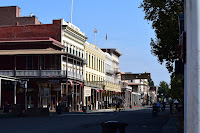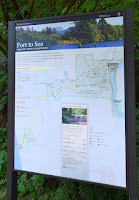Memories from a pre-covid trip...
Last year I was teaching high school in California and we were sent home to conduct “distance learning” on March 13th and my old school is still at home trying to teach and learn via the Internet. That’s getting close to a whole year. Now, this post is not about the merits of distance learning or whether students should be in the classroom during a surge in the pandemic. When I decided to share some pictures of the California State Railroad Museum I was reminded that people in professions other than hospitality and travel are having a hard time during this crisis as well. There are a good number of museum workers at home too.The California State Railroad Museum
Our Oregon Field Trip: Fort Clatsop
 |
| Map image from NPS |
Fort Clatsop was the winter encampment of the Lewis & Clark expedition from December 1805 to March 1806. The Corps of Discovery, as the expedition was called, first sighted the Pacific Ocean from Cape Disappointment. However, the explorers thought they would have better weather on the Oregon side of the river. It was here that they built a small fort. The National Park Service has built a replica fort on the site. The members of the expedition hiked from this location to the beach in today's city of Seaside to obtain salt from sea water. Today, if you are feeling adventurous, you can hike the same trail from Fort Clatsop to the monument in Seaside.
When you visit, come early in the day as this is a popular destination. There is a nice little museum and gift shop in the visitor's center. Bring a jacket, even in the summer. Because Astoria gets on average 86 inches of rain a year, even in June we had a light drizzle in the morning. Also, it is a short walk from the visitor's center to the fort. At the fort you will find docents in period costume to answer questions and give short presentations throughout the day.
The history of the Lewis & Clark expedition is well known and readily available, so I won't duplicate that here. But before you make a pilgrimage, you might want to bone up a little bit. I would of course recommend reading Undaunted Courage by Stephen Ambrose for a thorough and enjoyable background. And check out the Oregon Encyclopedia, a project of the Oregon Historical Society, for some related articles and historical records online.
Subscribe to:
Comments (Atom)
















